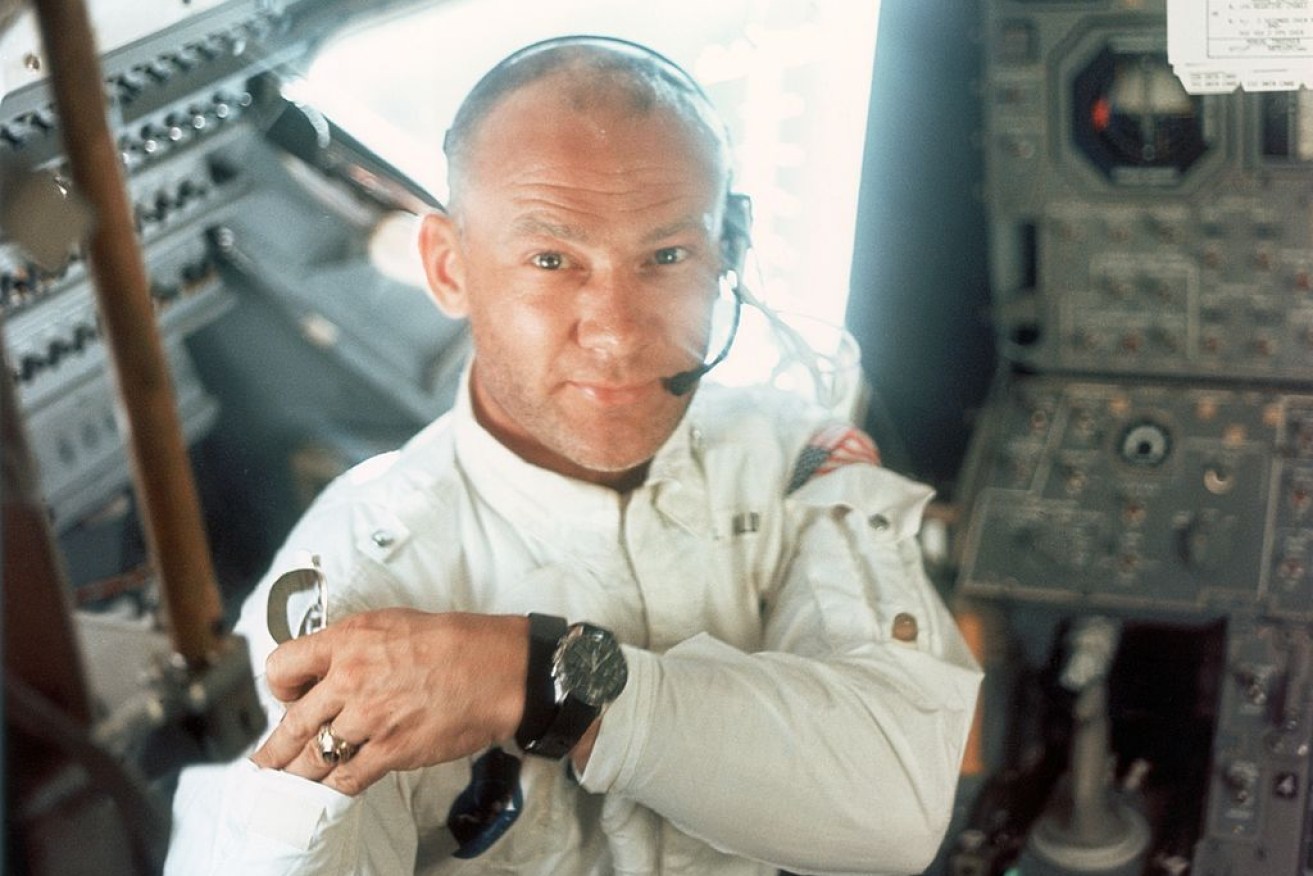Altitude sickness forced Buzz Aldrin’s evacuation from South Pole

Edwin E. "Buzz" Aldrin Jr on board the lunar module during the Apollo 11 mission in 1969. Photo: Getty
Buzz Aldrin, the second person to walk on the moon, says he was evacuated from the South Pole last week because he was showing signs of altitude sickness.
Mr Aldrin was visiting the South Pole as part of a tour group with his son Andrew, when his condition deteriorated and he was flown to a New Zealand hospital by a cargo plane for medical treatment.
In a statement, Mr Aldrin said he became short of breath and began showing signs of altitude sickness.
“I started to feel a bit short of breath so the staff decided to check my vitals,” he said.

Former astronaut Buzz Aldrin tweeted this picture from Christchurch Hospital early Friday morning. Photo: Twitter.
“After some examination they noticed congestion in my lungs and that my oxygen levels were low, which indicated symptoms of altitude sickness.
“This prompted them to get me out on the next flight to McMurdo and once I was at sea level I began to feel much better.”
He said he still had some congestion in his lungs and so had been advised to rest in New Zealand until it clears up, and to avoid the long flight back to the US for now.
He is continuing to recuperate in a hospital in Christchurch, New Zealand.
‘Mars-like’ mission cut short
Mr Aldrin said he was in Antarctica to add to his exploration achievements, calling the South Pole the “capstone of his personal exploration achievements”.
The primary reason for the trip was to “experience conditions akin to Mars”.
The veteran explorer was only a few hours into his trip when he had to be evacuated, the statement said.
“I didn’t get as much time to spend with the scientists as I would have liked to discuss the research they’re doing in relation to Mars,” Mr Aldrin said.

A ski-equipped LC-130 aircraft at NSF’s Amundsen-Scott South Pole Station. Photo: Mike Lucibella/NSF
“My visit was cut short and I had to leave after a couple of hours.
“I really enjoyed my short time in Antarctica and seeing what life could be like on Mars.”
Mr Aldrin was a fighter pilot during the Korean War before joining the US astronaut program.
On July 20, 1969, he stepped on the moon about 20 minutes after fellow astronaut Neil Armstrong had taken the historic first step.
Their moonwalk, part of the Apollo 11 lunar landing, was watched by a then-record television audience of 600 million people.
Armstrong died in 2012.
Mr Aldrin last year helped to launch a research institute at the Florida Institute of Technology aimed at paving a path toward Mars exploration and settlement.
I could be a little underdressed for Antarctica. Although I tend to be hot blooded. pic.twitter.com/iuCozGptxw
— Dr. Buzz Aldrin (@TheRealBuzz) November 27, 2016








